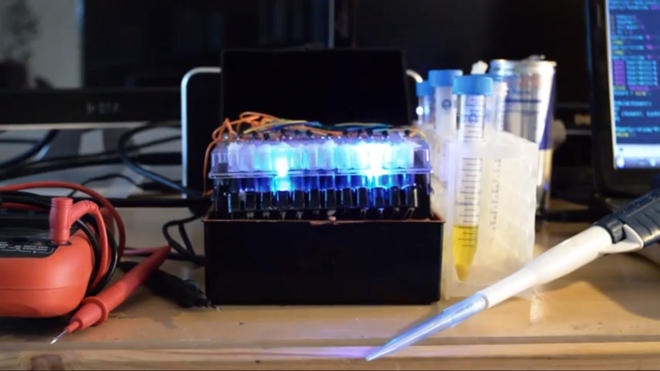Chromochord Uses Proteins to Play Tunes

A biophysicist from the University of Chicago, Josiah Zayner has become the creator of the first musical instrument that uses proteins to produce music. The new instrument, named Chromochord uses plant proteins known as LOV proteins (Light, Oxygen and Voltage sensing proteins) that respond to sunlight. When these proteins are exposed to sunlight, they expand and trigger cell signalling pathways. These LOV proteins are responsible for phototrophism in plants.
Josiah Zayner has used these LOV proteins from oats plant to create Chromochord. He has extracted these proteins into 12 different vials and engineered these proteins to react in different ways to blue light. A spectrophotometer sensor is then attached to these vials to record the reaction of these proteins when a blue light is shone upon them. These reactions are then translated into sounds. Each of the 12 vials in the Chromochord is programmed to produce different sounds.
The first prototype of Chromochord created by Zayner had buttons that had to be manually pressed to activate different vials to create sounds, but later he collaborated with the composer Francisco Castillo Trigueros to translate one of his compositions into light pulses and using it to play it on Chromochord.
Now the duo are planning to create a new musical instrument by exploiting pressure sensitive ion channels in bacterial and human cells , by measuring their response to sound waves and converting it to music.

